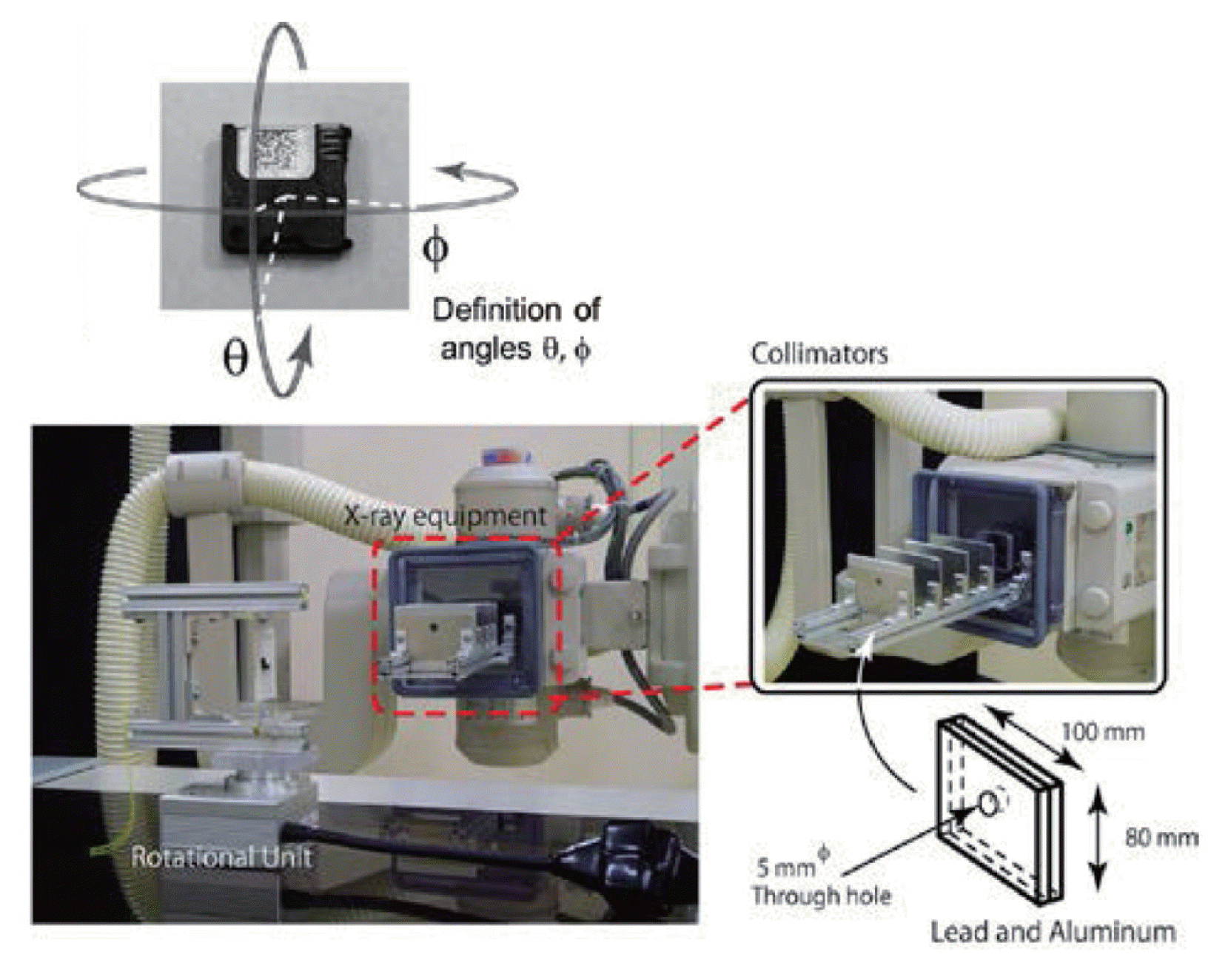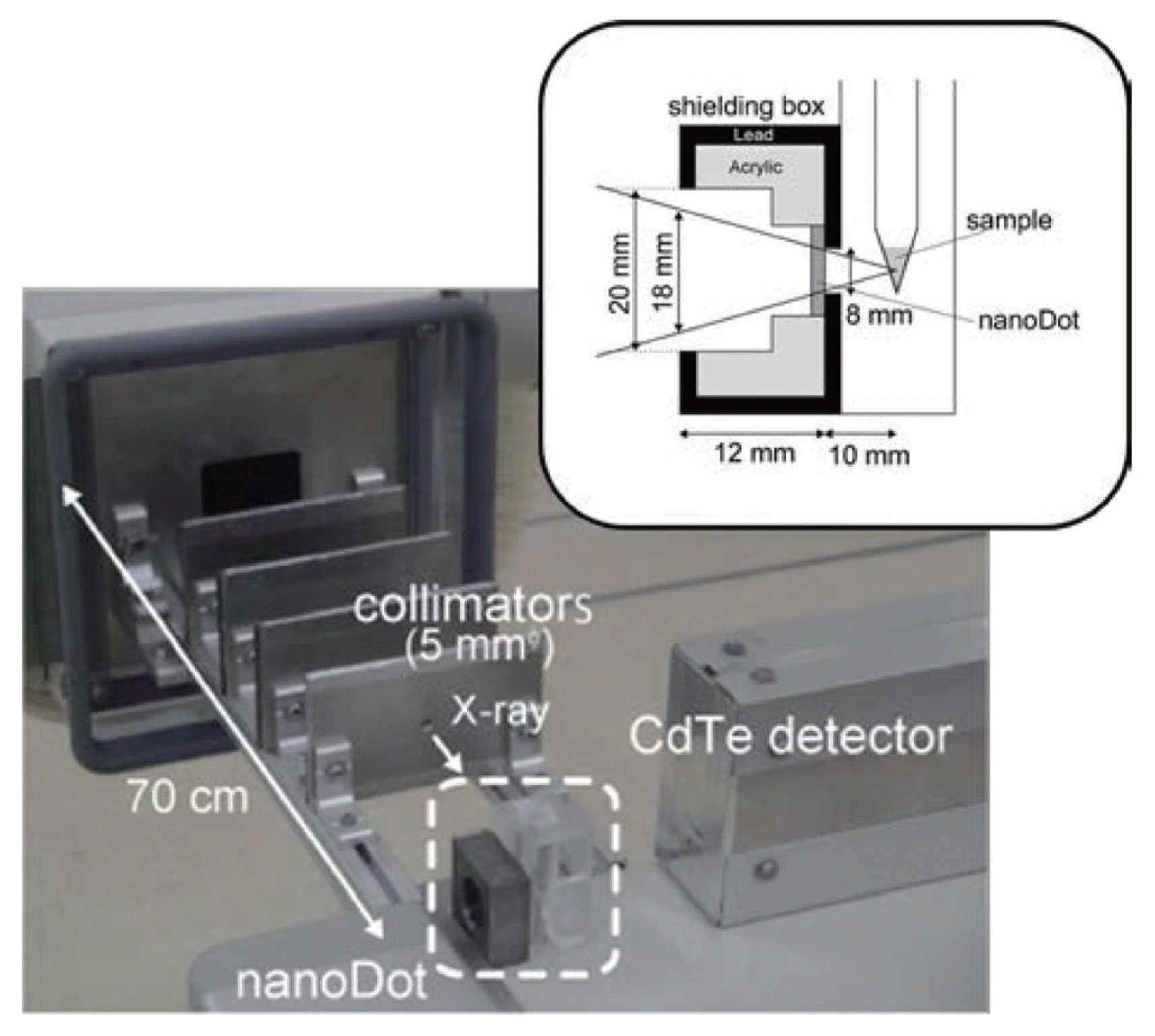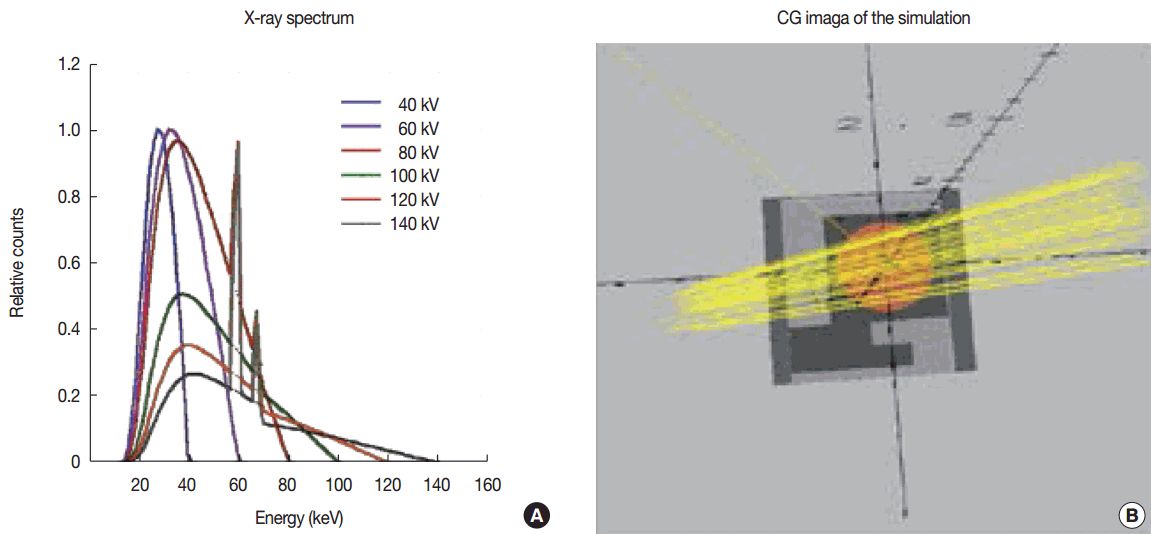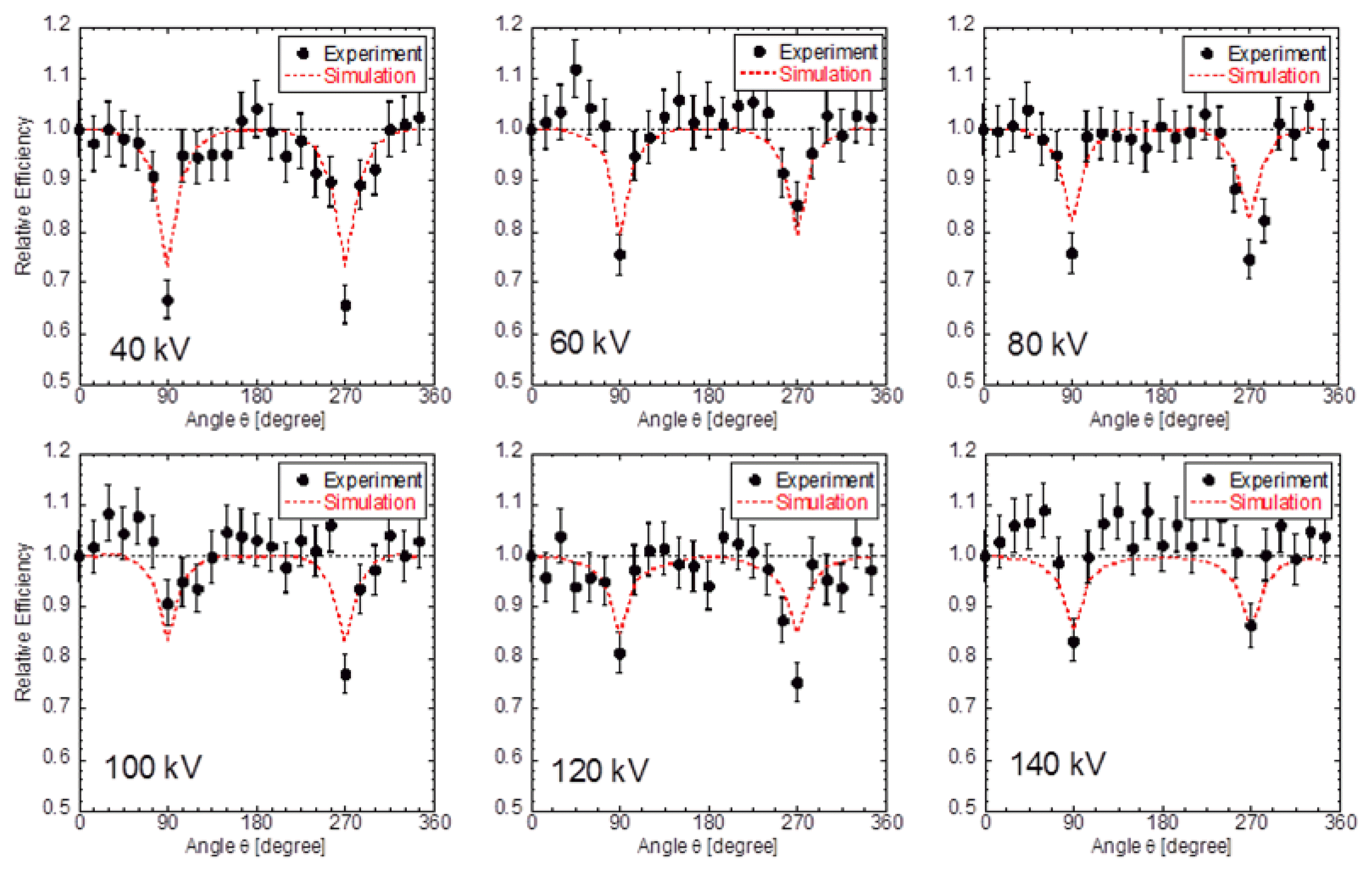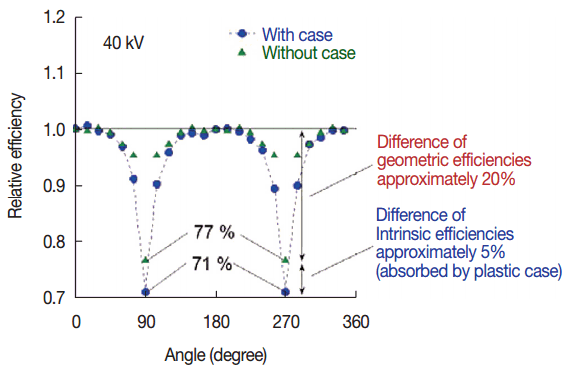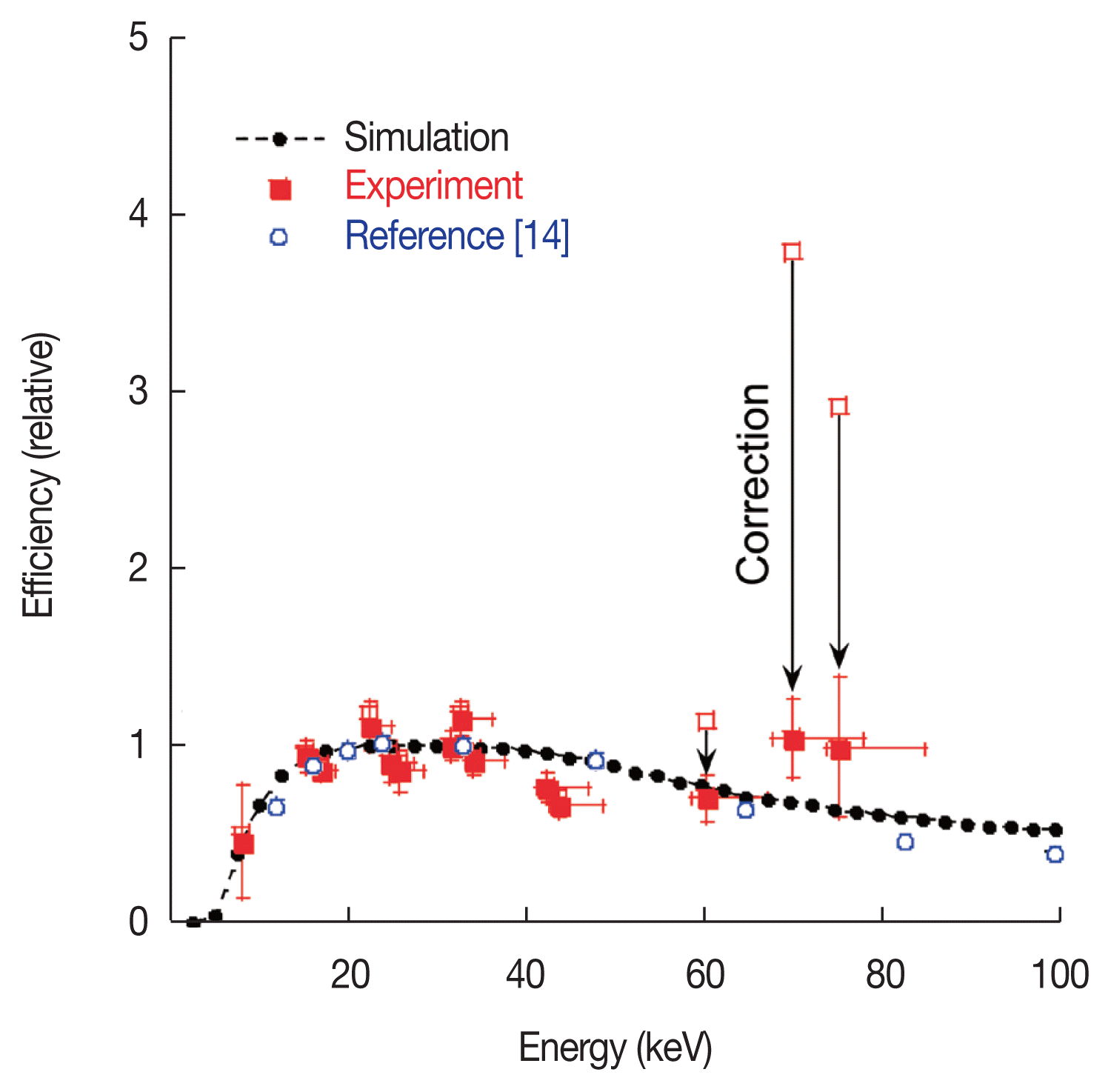Introduction
The exposure dose of patient has been increasing [1] caused by demand of the precise diagnosis, and exposure dose should be managed under consideration of quality of the medical images [2, 3]. To evaluate the patient dose in radiological examinations, it is prefer to measure exposed dose directly. Although some of dosimeters are used for direct measurement in radiotherapy region [4–7], direct measurement in X-ray diagnosis is not performed because the most of dosimeters disturb medical images. Therefore an air-kerma measurement based on ionization chamber [8] with the consideration of a back scatter factor [9–13] is traditionally used for the evaluation of entrance skin dose in X-ray diagnosis.
In order to propose the patient dose management system, we focus on the ability of the optically stimulated luminescence (OSL) dosimeter [14–16]. The basic characteristics of the OSL dosimeter and its potential for clinical applications were reported elsewhere; procedure for high accuracy measurement [17], annealing equipment [18], energy dependence measurement [19], angular dependence [20, 21], comparison with thermoluminescence dosimeter [22], and applied measurement using anthropomorphic phantom [23]. Moreover, the OSL dosimeter’s potential for the realistic clinical applications has been verified; the computed tomography [24, 25], interventional fluoroscopy [26] and so on. Combined with these studies, we proposed unique method [27, 28] for the conventional dose evaluation in which angular and/or energy dependences should not be considered. Figure 1 shows a demonstration of invisibility [29] using the small-type OSL dosimeter (nanoDot OSL dosimeter). The nanoDot OSL dosimeter can be achievable to perform the direct measurement of entrance skin dose in X-ray diagnosis. Although the basic characteristics of the nanoDot OSL dosimeter on diagnostic X-ray have been reported, the detailed properties are required to evaluate the entrance skin dose precisely.
The entrance skin dose is composed of primary X-ray and scattered X-rays. The amount of primary X-ray can be estimated by the condition of the irradiation, however that of scattered X-rays depends on the individual situation. In particular the distribution of the incidence direction and the energy of scattered X-rays vary with thickness of the subjects. For this reason, correcting the influence of the angular dependence and energy dependence of the dosimeter play an important role in direct measurement of entrance skin dose precisely. In this paper we studied the evaluation of angular dependence and energy dependence of the nanoDot OSL dosimeter in diagnostic X-ray region.
Materials and Methods
1. Materials
A commercialized X-ray apparatus (MRAD-A 50S/70, TOSHIBA medical systems corp., Otawara, Japan) was used for the experiment. The original collimator [30] was used to reduce the scattered X-ray from removable diaphragm and confine the primary X-ray beam to the size of exposed sample.
The dose data of OSL dosimeter can be initialized by visible light annealing process [16, 18]. The nanoDot OSL dosimeters, annealed well by original equipment [18], were used for the experiments. Irradiated nanoDot OSL dosimeters were read out consecutive 5 times by microStar and the sensitivity corrected counts were used for the evaluation of angular dependence and energy dependence. The uncertainty of the measurements was estimated based on the previous report [17].
2. Experiment
Figure 2 shows the experimental setup of angular dependence experiment. A nanoDot OSL dosimeter was attached on a thin film (Parafilm™, Pechiney Plastic Packing Company, Chicago, USA) and fixed to a remotely-controlled rotational unit. Source to dosimeter distance was 1.5 m. A nanoDot OSL dosimeter was rotated on two different axes; θ and ϕ defined in Figure 2 40–140 kV of X-rays were collimated to be 2 cm-radius and were irradiated to a dosimeter which was set in air condition. The angle of irradiation was rotated to every 15 degrees.
Figure 3 shows the experimental setup of energy dependence experiment. The characteristic X-ray source material was put into micro test tube and set to the center of the setup. Then, it was exposed by a 5 mm-radius collimated primary X-ray. A nanoDot OSL dosimeter was set to be 1 cm distance from the micro test tube in perpendicular direction of primary X-ray. To reduce influence of the scattered X-ray, the dosimeter was shielded by 2 mm thickness of lead plate. On the opposite side of the sample material, CdTe semiconductor detector (123-0 type, EMF Japan Co., Osaka, Japan) was set in 5 cm distance from the sample to determine energy fluence and/or air kerma of the characteristic X-rays. To reduce the influence of scattered X-ray, the detector was also shielded. The characteristic X-ray source materials are listed in Table 1. The elemental substances, oxidized, or carbonate samples were used for the characteristic X-ray source materials because the energies of characteristic X-ray generated by oxygen and carbon were negligibly low. The weighted mean energy of Kα and Kβ X-rays, effective energy, was used for the analysis. The energy range of characteristic X-rays was 8.1–75.5 keV.
When the primary X-ray was irradiated, not only the characteristic X-ray but also Compton scattered X-rays were generated. For estimating the contribution of the Compton scattered X-rays, water sample was irradiated and the contribution of them were subtracted from the sample of interest. Then, the spectra of characteristic X-rays used for the irradiation of the nanoDot OSL dosimeter were derived by the spectra measured with the CdTe detector; using the Monte Carlo simulation code [31], response functions of the CdTe detector were calculated [32] and the measured spectra were unfolded. Here, the air kerma corresponding to the characteristic X-rays was calculated by the unfolded spectrum and the mass energy absorption coefficient [33]. At the cases of Au and Pb samples irradiation, LX-rays were emitted in addition to the KX-rays. The contribution of LX-rays was subtracted based on the simulated energy dependence of nanoDot OSL dosimeter as described in the next section.
3. Monte Carlo Simulation
To evaluate the experimental results, Monte Carlo simulation (EGS5: electron gamma shower ver. 5) [31] was performed. For construction of nanoDot in the simulation, micro-CT images assessed by Lehmann et al. [20] were used. For the calculation of energy dependence, mono-energetic X-rays were introduced to the nanoDot OSL dosimeter. For the angular dependence, X-ray spectra were introduced. Moreover, the following simulations were performed; 1) simulations without plastic case for evaluating the absorptions of X-rays in the plastic case of the nanoDot OSL dosimeter, and 2) randomly irradiation to evaluate the clinically using situation. The spectra of primary X-rays estimated by Birch’s formula [34] were applied as shown in Figure 4A. Figure 4B shows computer graphic image of the simulation. For an efficient simulation, the X-rays were just introduced to the detection region of the nanoDot OSL dosimeter.
Results and Discussion
1. Angular Dependence
Figures 5 and 6 show the comparison of experimental and simulated angular dependences for θ and ϕ directions, respectively. Solid circles show experimental data, and dashed lines show simulated ones. The experimental data were in good agreement with the simulation.
We discuss the cause of the response decreasing in 90 degrees and 270 degrees. We estimate the influence of the absorption by the construction of dosimeter and OSL material itself. Figure 7 is the simulated results of angular dependence in 40 kV X-ray between with and without the case. The effect of the geometric efficiency (solid angle) is 20% and the self-absorption of the construction is 5%. In higher energy X-rays than 40 kV, the absorption rate becomes smaller, because the attenuation rate of 40 kV is much higher than that of the others. Therefore, the above mentioned absorption rate is considered to be maximum in diagnostic X-rays.
To evaluate the entrance skin dose precisely, the angular dependence correction of nanoDot OSL dosimeter with the estimated incident X-ray spectrum is effective. However, it is difficult to estimate the incident X-ray because the scattered X-ray varies with the irradiation condition and the figure of the patient. Accordingly, we estimated the influence of angular dependence with a simple model using the Monte-Carlo simulation. Figure 8 shows the comparison of the responses in 0 degrees irradiation and the 4π random irradiation. The reduction of responses in randomly irradiation by 4 π directions is less than 4% in energy range of 40–140 kV.
2. Energy Dependence
The air kerma corresponding the characteristic X-rays “K” was estimated by the response of CdTe detector based on the following formula [8]:
FS (E): The number of energy E photon in the source material irradiation
FW (E): The number of energy E BG photon evaluated by H2O sample irradiation
CF: Correction factor of the BG photon contribution rate in the source material irradiation
(μen (E)/ρ)air: mass energy absorption coefficient of the air
The air kerma obtained in this study is presented in Table 1. They were determined with accuracy of 2–8%. The nanoDot OSL dosimeters were also exposed by characteristic X-ray and/or background (BG) X-ray. In the same manner as CdTe detector, the contribution from BG in measured counts of the dosimeter was subtracted using the same correction factor; CF. The energy dependence data was defined as the ratio of response of nanoDot divided by the air kerma evaluated by the CdTe detector. The result of energy dependence normalized at 30 keV was shown in Figure 9 and these data were also summarized in Table 2. The experimental data were in good agreement with the simulated ones. In the Figure 9, the precisely determined experimental values reported by Eduardo et al. [14] were also plotted. Their data were determined using the standardized X-rays, and it was clarified that our data was consistent with their data. The response of nanoDot OSL dosimeter varies with the energy and the difference is double at a maximum between 8.1 keV and 30 keV. However, it has little chance for the nanoDot OSL dosimeter to be exposed by 8 keV and 30 keV X-rays simultaneously in X-ray diagnosis. When the direct measurement of entrance skin dose is performed, the nanoDot is mainly exposed by primary X-ray and Compton scattered X-rays which are emitted from the body of the patient. In this situation, the energy of Compton scattered X-ray generated by 30 keV of primary X-ray is at most 26 keV. Namely, the difference of the energy is only 4 keV and the influence of the energy dependence of nanoDot OSL dosimeter is less than 1%. That is negligibly small.
Conclusion
The nanoDot OSL dosimeter, does not disturb the medical image, is useful tool for direct measurement of patient dose in X-ray diagnosis. To evaluate the entrance skin dose with the dosimeter precisely, the correction of angular dependence and energy dependence based on the experiment and simulation is preferred. Hence we measured the angular dependence and energy dependence of nanoDot in the energy range of diagnosis. The simulated results were in good agreement with the experiments. Moreover, we estimate the influence of angular dependence and energy dependence with simple model. In conclusion, we evaluated that the entrance skin dose can be measured by the nanoDot OSL dosimeter with only 5% of deviation. For clinical application, more precise experiment and analysis are now in progress.




